Australian New Year’s Eve traditions mostly involve drinking hard, watching fireworks and calling it a party. This is followed by spending 1 January sleeping it off. Where Christmas Day is family time, NYE Down Under means time with friends.
In Ecuador, I was introduced to the tradition of making and breaking monigotes (mon-ee-GO-tez): life-sized replicas of yourself and people you know. These effigies are also known as muñecos (moon-YAY-coze, meaning “dolls”) or años viejos (ahn-yose vi-AY-hose, meaning “old years”).
I can hardly believe that was eight years ago. In reminiscing over that NYE, spent with a local family in the Andean village of Gonzanamá, I’ve realised there are some lessons we can draw from this unique custom. I’ll summarise them as Create, Castigate, Incinerate, Leap (somebody find me a decent rhyme!) and Celebrate.
Lesson 1 – Create: See yourself
Step 1. Create an effigy of yourself, using papier mâché (or a balloon) for your head and face. Dress it in some of your old clothes.



In the same way that families in Australia, the US and the UK may walk around the neighbourhood admiring the various Christmas light displays, we strolled through the streets checking out everyone’s effigies. (Scroll to the end to see some of them.) There were also contests for the best displays.
Sure, it seems a bit voodoo but it’s not unlike a self-portrait sculpture you might do in art class.
This act of creation is, in a way, a self-reflective exercise and symbolic of how you see yourself. I thought about whether to make my monigote life-like or a caricature. I thought about how to make it uniquely me. But the strangest thing wasn’t the act of drawing my own face – it was attaching this face to my actual clothes and “beholding” myself.
Lesson 2 – Castigate: Acknowledge your faults and disappointments
Step 2. Throw everybody’s effigies into a pile on the street, find a belt and take turns to whip them.
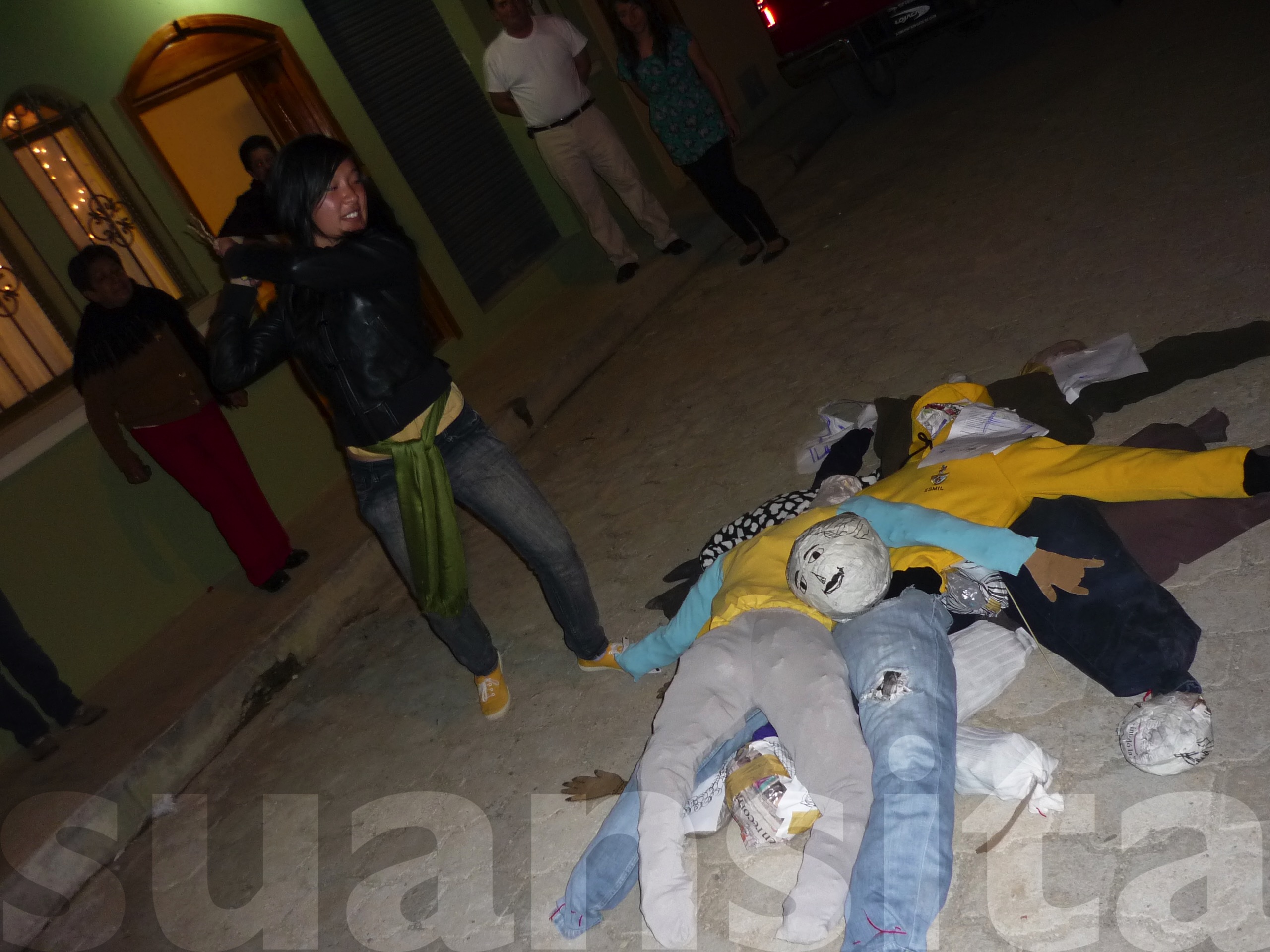
This is the weird bit with vaguely Catholic undertones – flagellation without actually hurting yourself. Perhaps I’m drawing too long a bow in saying it’s an act of violence that, despite being initially shocking, transforms into something cathartic. But bear with me.
While I don’t endorse corporal punishment (or corporal penance) and I think it’s super destructive to wallow in guilt, there is still a place for admitting your faults and disappointments. Recognising guilt can lead to repentance, acknowledging anger and hurt can lead to forgiveness.
If you don’t buy any of that, well, basically it’s a piñata – only it’s shaped like you and isn’t full of lollies. Or, you can think of it as a sort of punching bag. It’s not bad as a safe outlet for anger and aggression.
Lesson 3 – Incinerate: Let it go … like, actually
Step 3. Pour kerosene over it and set fire to the thing!
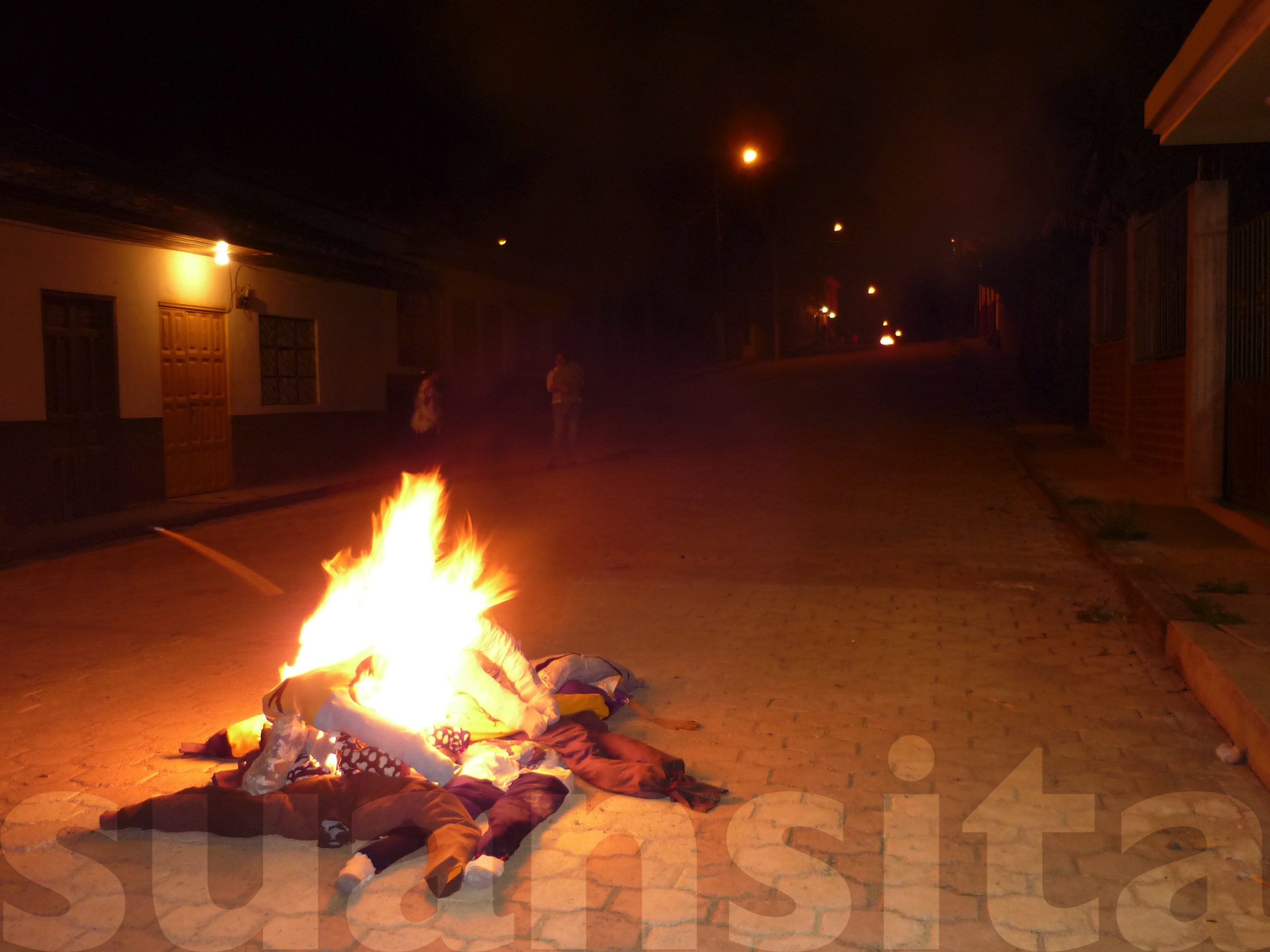
There’s no point in wallowing in your guilt and disappointment. By burning your monigote up, you symbolically declare these things dead and gone. Past. Over.
As you can see in the burning pile above, it’s not just your old self that’s dead, gone and over – it’s your family’s, too. A good reminder, I think, to let go not only of your own faults and disappointments, but also any grievances and bad blood you may still have with particular family members.
Lesson 4 – Jump: Move on into the new year, new you
Step 4. Take turns to leap over the pile of burning effigies.
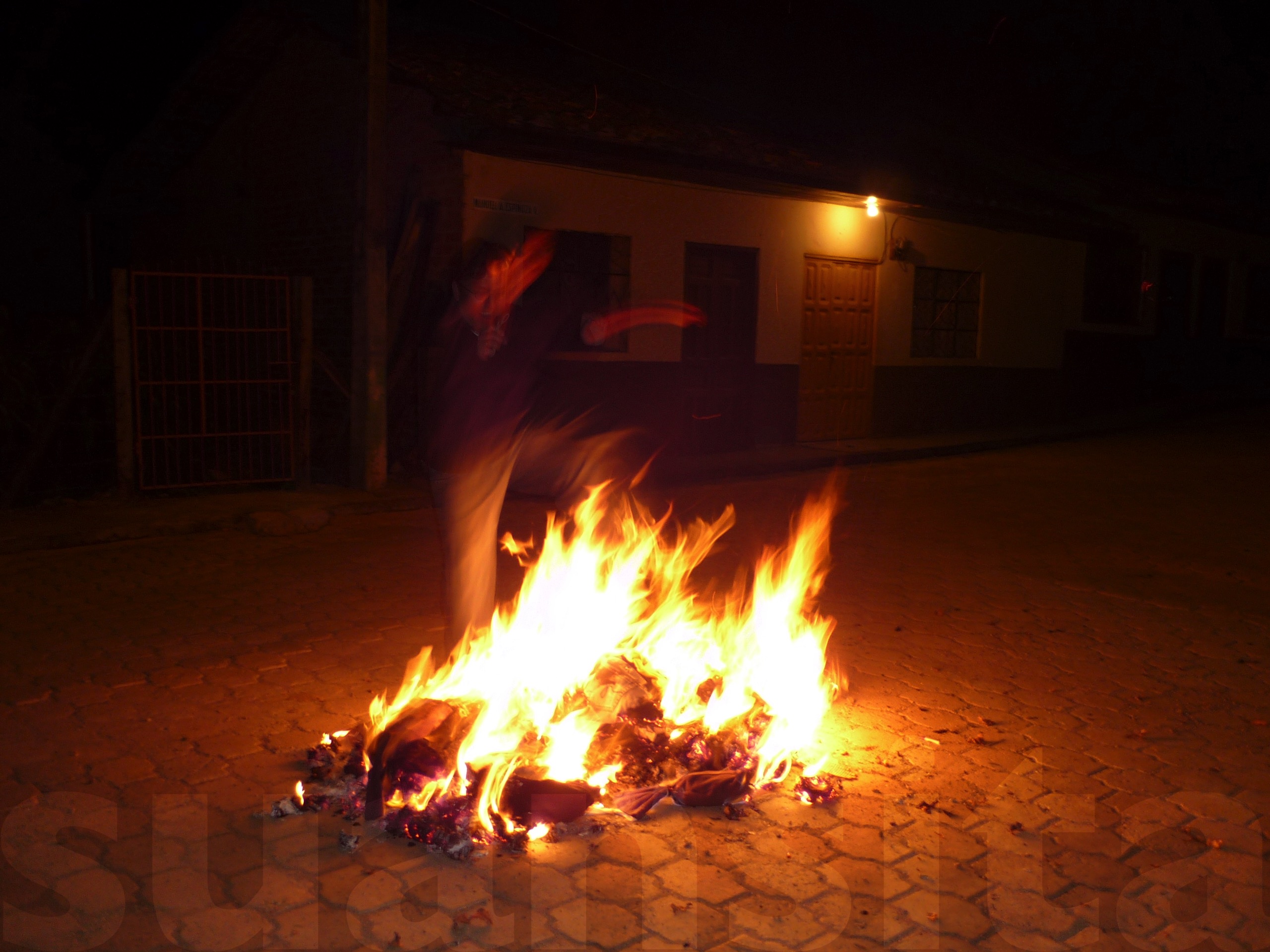
Having let go of the past, you then move on. Leaping over the bonfire is the fun (and slightly risky) bit, representing a transition out of the old and into the new.
Lesson 5 – Celebrate: Feast and fiesta
Step 5. Celebrate with a midnight meal followed by dancing in the streets till dawn!
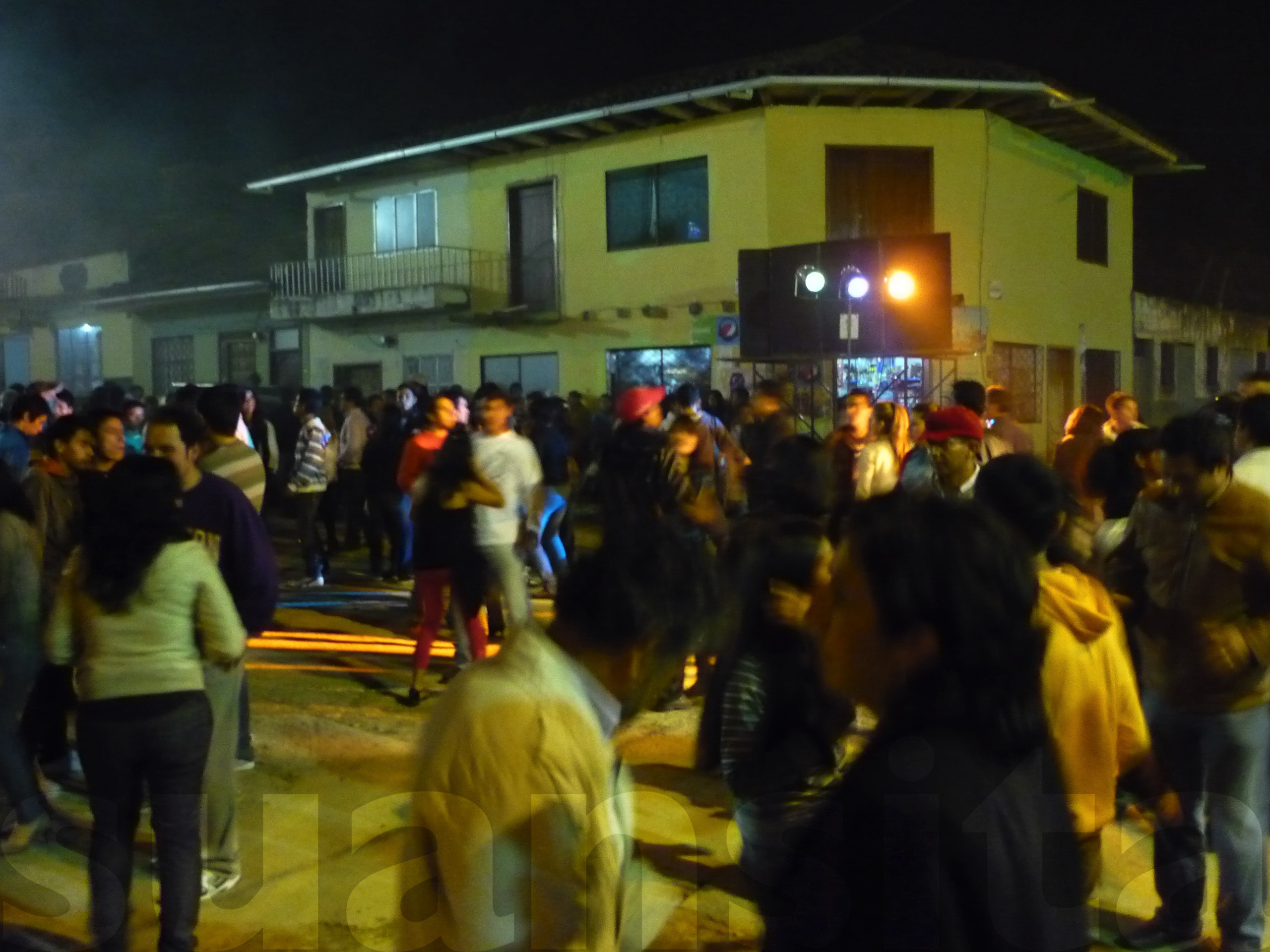
Eat and dance: there’s nothing particularly unique about this step. The thing, though, is that without the preceding steps, it’s just fun and messing around – like most Aussie NYE parties.
What elevates this from “fun” to “celebration”? Basically, having something to celebrate. When it’s not just fun for fun’s sake but an act of gratefulness for leaving behind the dark of the past and welcoming new opportunities – then, well, it can be an almost spiritual experience.
*
As we approach 31 December, I won’t make an effigy, but I can still “create, castigate, incinerate, leap and celebrate” by pausing to consider who I am now, and how the decisions and events of the past 12 months have shaped me.
Although I normally avoid dwelling on negative things, I know that there are weaknesses, mistakes and unfulfilled hopes and expectations in my life. “Castigating” is less about punishing myself and more about being honest with myself. Part of “incinerating” these things and “leaping” into the New Year is understanding areas of growth for myself and, from these, drawing up some meaningful resolutions for next year. In a way, resolutions can be a practical way to leave behind hurts and disappointments rather than a to-do list or a non-committal commitment to “get fit”.
Doing this, I believe, lays a stronger foundation for true celebration. When I welcome the New Year, I want to celebrate more than the fact of still being alive and the joys and achievements of the last year – isn’t that what birthdays are for? I want to celebrate my life and self as a work in progress, that I don’t have to be shackled by failures of the past, that I have the opportunity to become, more than ever, the person I was made to be.
Feliz Año.
You can find a good overview of this and other Ecuadorian New Year traditions here.

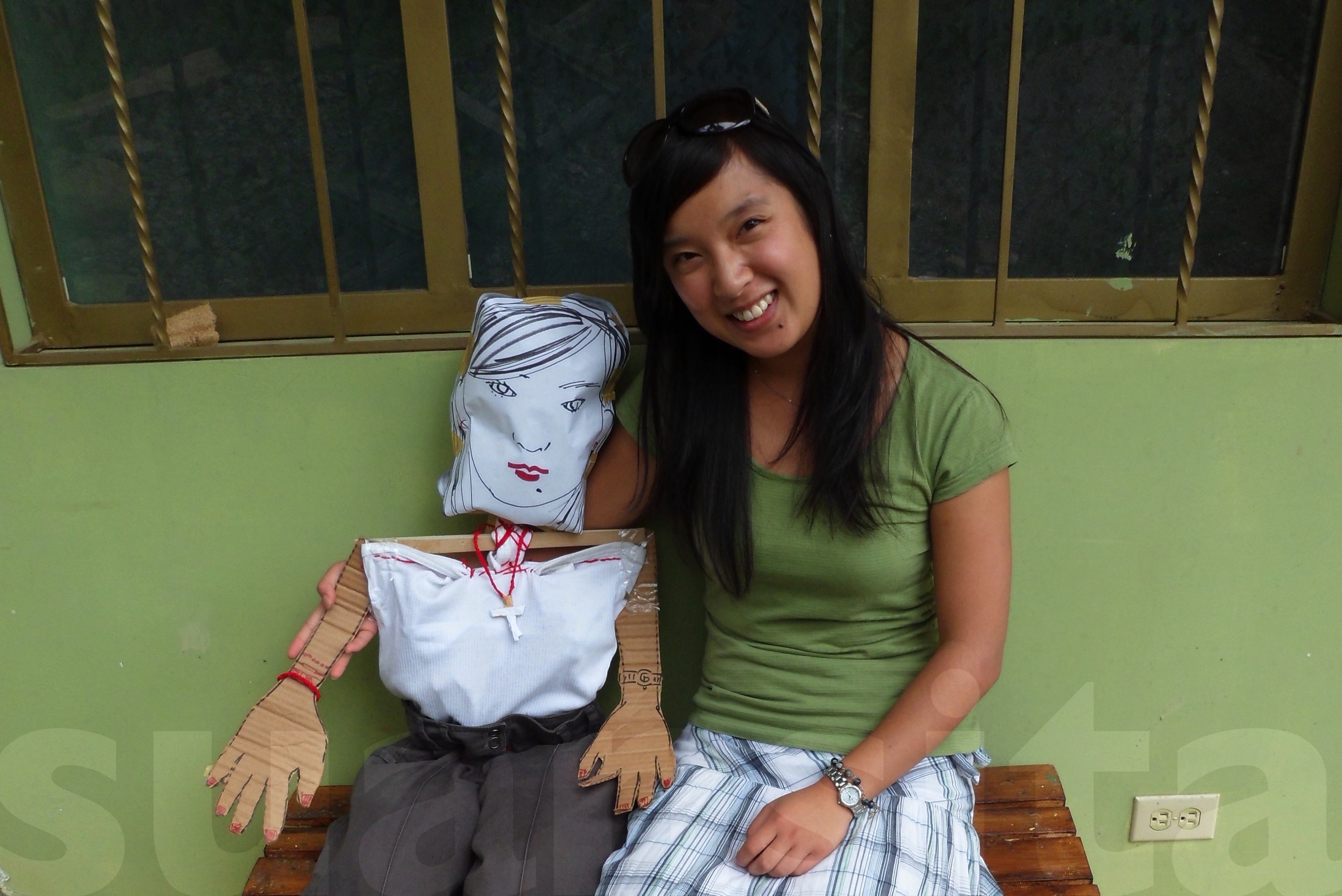


2 comments
Thanks Ann. Another very interesting article. Good piece of writing.
Thanks, Sam Ku! It is a pretty interesting tradition?